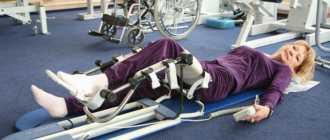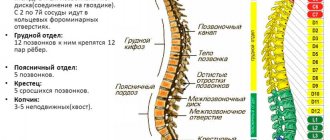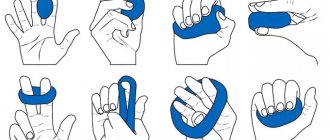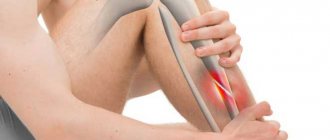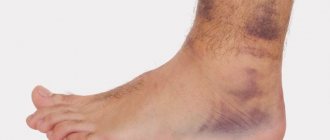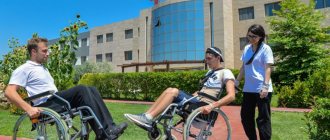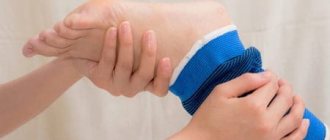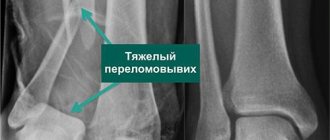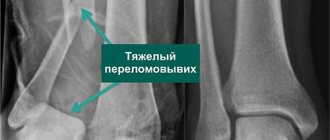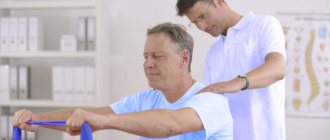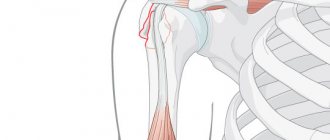A spinal injury does not always result in damage to the spinal cord. Both disorders can occur independently of each other and negatively affect the patient's ability to move and self-care. In most cases, we are talking about spinal cord injury (SCI), usually provoked back injury.
Video about → Our team → Photo walk through the center →
The most common causes of fractures, dislocations and bruises, the consequences of which are eliminated by rehabilitation specialists, are:
- road accidents;
- falls, including from a small height with an unsuccessful landing and a high impact force on the back;
- diving upside down in an unexplored water area (when hitting the bottom, a displacement occurs in the cervical spine and, as a rule, the diver is immobilized).
Advanced methods of rehabilitation after injuries to the spinal cord and spine for a complete recovery are necessary not only for patients after accidents, but also for those who are faced with blood diseases, have experienced oncology in the area of one or more vertebrae, or suffer from degenerative pathologies in which bone tissue is gradually destroyed .
Physical rehabilitation for injuries of the spine and spinal cord has its own characteristics, depending on the degree of injury received, its scale and location: cervical, thoracic, lumbar. At each of these levels, a different set of restorative procedures is applied, taking into account the specifics of the disorder, the presence of complications and the characteristics of their development.
In case of injury to different parts of the spine, the symptoms may vary greatly: the degree of immobility, the level of loss of sensitivity, the manifestation of dysfunction of the pelvic organs. Treatment of the thoracic, cervical, and lumbar spine during rehabilitation in our center will largely be based on consistent diagnostics, the results of which will form the basis of an individual rehabilitation therapy regimen. A detailed examination and analysis of the patient’s complaints helps to build a complete picture of the damage and make objective forecasts regarding the prospects for treatment. At this stage, it is important to determine whether the damage affects neighboring sections and whether there are concomitant pathologies that were caused by the resulting fracture, dislocation or severe bruise of soft tissues.
Individual work is carried out with each patient, taking into account the characteristics of his physical and psychological condition. Largely thanks to this approach, we are able to achieve high effectiveness of therapy in a relatively short time. Individual programs are developed, including for rehabilitation after a stroke and after traumatic brain injury.
Rehabilitators at our center in Moscow have been treating the spine after back injuries for many years. The most effective methods and programs are used in the recovery and rehabilitation of patients with spinal cord injury, which helps correct the consequences of damage at all levels.
Spinal Injury Treatment Program
Each course of rehabilitation treatment has its own indications and contraindications. Clinical recommendations for completing such programs are given from the first day after the main treatment, including after a recent operation. Each case requires a professional combination of procedures and systems of physical rehabilitation: you cannot independently select exercises, types of load and other means of recovery, since there is a high risk of aggravating your condition, provoking the development of complications. In addition, to achieve positive recovery dynamics, it is important to observe the consistency and regularity of all manipulations.
A course of comprehensive rehabilitation after injuries to the spine and spinal cord with injuries in the cervical spine
Mandatory examination by specialists:
- neurologist;
- therapist;
- physiotherapist;
- physical therapy doctor;
- urologist;
- surgeon;
- psychologist.
Working with a psychologist in rehabilitation is an integral part of any recovery treatment! In approximately 20-30% of cases, patients with spinal injuries suffer from depressive disorders due to the loss of the ability to self-care and the need to constantly depend on someone.
Laboratory research:
- clinical blood test;
- blood chemistry;
- detection of infections;
- general urinalysis and culture.
Diagnostic procedures:
- electroneuromyography;
- ECG;
- chest x-ray;
- X-ray of bones and joints;
- Ultrasound of the kidneys, ureters, bladder, abdominal and pelvic organs.
Course of procedures:
- Individual kinesiotherapy - 20 procedures;
- Individual mechanotherapy – 20 procedures;
- Individual hydrokinesitherapy – 12 procedures;
- Classic massage - 10 procedures;
- Physiotherapy - 40 procedures;
- Ergotherapy - 12 procedures;
- Social adaptation - 12 procedures.
A course of complex treatment and rehabilitation for injuries of the spine and spinal cord after injuries in the thoracic and lumbar regions
Mandatory examination by specialists:
- physical therapy doctor;
- therapist;
- urologist;
- neurologist;
- physiotherapist;
- surgeon;
- psychologist.
Laboratory research:
- clinical and biochemical blood tests;
- general analysis for infections;
- general urinalysis and culture.
Diagnostic procedures:
- electroneuromyography;
- ECG;
- chest x-ray;
- X-ray of bones and joints;
- Ultrasound of the kidneys, ureters, bladder, abdominal and pelvic organs.
Course of procedures:
- Individual kinesiotherapy - 20 procedures;
- Individual mechanotherapy – 20 procedures;
- Individual hydrokinesitherapy – 12 procedures;
- Classic massage - 11 procedures;
- Physiotherapy - 40 procedures;
- Balance training – 20 procedures;
- Social adaptation - 12 procedures.
Injuries of the cervical spine - contraindications to exercise therapy
Contraindications to physical therapy for injuries to the cervical spine are:
- General serious condition of the patient.
- Persistent pain syndrome.
- Persistent increase in body temperature (37.5°C and above).
- Persistent increase or decrease in blood pressure.
- Progressive increase in neurological symptoms (deterioration of motor activity in the extremities, impaired sensitivity).
- Severe asthenic syndrome in the period immediately after performing a complex of physical therapy.
Treatment time after back injuries
Treatment of spine and spinal cord injuries in Moscow lasts 30 days. As a rule, this is enough for effective recovery and achieving the best possible results in each specific case. The need to adjust the program is considered in accordance with the indications for treatment and is discussed separately with the patient.
FAQ
Question:
When can I go to rehabilitation?
Answer:
The consequences of a spinal cord injury are always accompanied by limitation of movement. Patients can enter rehabilitation at the center on the day of discharge. The sooner physical therapy classes begin, the less sad the consequences of the injury will be.
Question:
What do you need to enroll in rehabilitation at Yantar RC?
Answer:
Send us a discharge or interim epicrisis (in common parlance - an extract) to the center's email address. The email address is being protected from spambots. Javascript must be enabled in your browser to view the address. or on whatsapp or viber Wait for a response from the manager (price confirmation and permission to check-in) Choose any day for check-in, because we work without holidays and weekends!
Recovering from a spinal injury using exercise equipment
Working with such disorders is one of the main directions of rehabilitation, therefore, a significant place in the recovery of patients is given to methods of robotic rehabilitation for spinal injuries. High-tech equipment during training builds feedback with the patient at the biological level. It has a virtual interface that helps assess motor functions before and after training, as well as create an effective individual program and properly motivate the patient throughout the course.
Special simulators for restoring mobility and walking after a spinal cord injury in Moscow in our center significantly reduce the duration of treatment, help to qualitatively consolidate the successes that are especially difficult for patients, and thereby strengthen their confidence that they are able to overcome the consequences of the injury.
Trauma to the cervical spine - exercise therapy during traction. Approximate set of exercises
Starting position – lying on your back, arms along your body.
- Diaphragmatic breathing. A weight (a bag of sand or a plastic bottle) weighing 1–1.5 kg is placed on the stomach (either in the upper or lower part of the abdomen). As you exhale, raise the weight as high as possible, hold your breath for 5 - 10 seconds, and lower it as you inhale. Performed 4-6 times.
- Dorsal and plantar flexion of the feet.
- Clenching and unclenching the fingers.
- Circular movements of the feet.
- Flexion and extension of the arms at the elbow joints.
- Alternately bending the legs at the knee joints, sliding the foot along the plane of the bed.
- Diaphragmatic breathing.
- Flexion and extension of the hands at the wrist joints.
- Alternate abduction and adduction of the legs without lifting them from the plane of the bed.
- Circular movements in the wrist joints.
- Diaphragmatic breathing.
Note. Exercises are performed at a calm pace with pauses for rest. Each movement is repeated no more than 4-6 times. Classes are held 2-3 times during the day.
Additionally, in the complex of physical therapy for injuries of the cervical spine during the traction period, such labor operations as rolling and unrolling bandages and gauze napkins, modeling from plasticine, knitting, etc. are indicated.
Cost of treatment of spine and spinal cord injuries in Moscow
The cost of paid rehabilitation after injuries to the spine and spinal cord in a rehabilitation center is calculated individually, based on the complexity of the recovery process and the need to make additions to the main program. To clarify information, request a call back or contact us by phone.
Rehabilitators at our center have a wealth of practical experience. With their help, hundreds of patients were able to overcome all the difficulties of recovery and return to a full life. As confirmation of the quality and effectiveness of our work, we regularly receive positive feedback and gratitude.
Trauma to the cervical spine - exercise therapy after immobilization. Approximate set of exercises
Starting position – lying on your back, arms along your body.
- Diaphragmatic breathing (8-10 times).
- Slowly bend your arms at the elbow joints with tension, bringing your hands to your shoulders (6-8 times).
- Raise your straight leg (45º), hold for 5-10 seconds, lower (6-8 times). Starting position: lying on your stomach.
- Arm movements as in breaststroke swimming.
- Alternating abduction of the straight leg (6-8 times).
- Starting position – lying on your back, arms along your body. Diaphragmatic breathing (8-10 times).
- Hands to shoulders. Raising your arms up, bend in the thoracic spine (4-6 times).
- Circular movement of the arms in the shoulder joints - “mill” (6-8 times in each direction).
- Alternate extension of the knee joint (6-8 times).
- Starting position: sitting on a chair, feet on a medicine ball. Rolling a medicine ball forward, backward, to the sides.
- Starting position – lying on your back, arms along your body. Diaphragmatic breathing (8-10 times).
- Alternate abduction and adduction of the legs (8-10 times).
- Half squats (4-6 times).
- Raise your arms up - inhale, return to the starting position - exhale (6-8 times).
Starting position – sitting on a chair.
Starting position: standing, holding the back of the chair with your hands.
Note. It is also recommended to include the isometric exercises given above in the set of exercise therapy exercises for cervical spine injury after the end of the immobilization period (removal of the fixing bandage).
Treatment methods
Rehabilitation begins 2-3 days after removal of the plaster and splint. To prevent re-fracture of the bone, a fixing bandage is applied during physical activity. It reduces the load on the damaged area and reduces pain. Treatment of the spine after a fracture includes wearing a corset to fix the vertebrae.
From medications, the patient is prescribed painkillers, drugs and herbs to strengthen the immune system. Rehabilitation after a hip fracture requires the use of chondroprotectors. If the injury is caused by decreased bone strength, calcium and vitamin D3 supplements are recommended.
To restore joint mobility, normalize muscle tone and return to motor activity, therapeutic exercises are carried out in 3 stages:
- Passive exercises, development of fine motor skills of the hands during rehabilitation after a fracture of the shoulder or hand.
- Increased load on the bone in the absence of pain. Developing joints with active exercises.
- Active gymnastics, including fast movements, walking, exercises on exercise machines.
Return to sports is indicated 6 months after a leg fracture, 12 months for the spine, 3-4 months for the arm or shoulder. Recovery time depends on the patient's age, treatment methods and severity of the injury. Thus, rehabilitation after a displaced fracture of the radius takes longer than after a crack in the bone.
To speed up recovery, the patient is prescribed:
- physiotherapy;
- massage;
- Nordic walking;
- hydrotherapy;
- ozone therapy;
- kinesiotherapy.
Here you can learn more about the treatment methods at our center.
Stages of treatment in
Rehabilitation after fractures in the Moscow region is carried out in several stages:
- Studying the doctor's statement, epicrisis.
- Placing the patient in a hospital.
- Drawing up an individual treatment program.
- Monitoring the patient’s condition, providing the necessary medical and psychological assistance.
- Application of modern treatment methods.
After discharge, the patient is given recommendations on nutrition, physical activity, and medications are prescribed.
Any questions? Call us at +7 for a free consultation. You can check the price list and conditions of stay in the center in advance.
